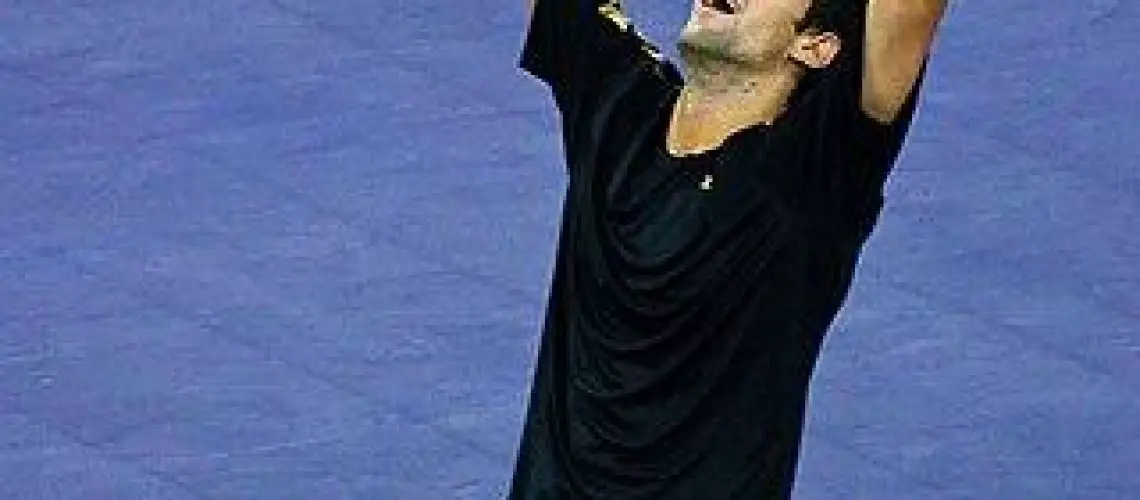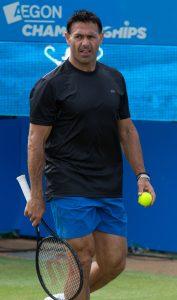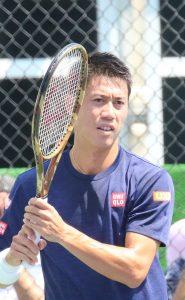We may earn money or products from the companies mentioned in this post.
A Quick Summary

Unforced errors are mistakes made by a player due to their own actions rather than their opponent’s shot. To reduce their occurrence, players need to improve their technical skills, develop mental fortitude, and adjust their shot selection to court conditions. This can be achieved through video analysis, match statistics, targeted practice drills, feedback from coaches or experienced players, mental conditioning, stress management, and visualization techniques.
Introduction to Unforced Errors in Tennis

Tennis is a game of precision and skill, where players aim to outmaneuver their opponents with well-crafted shots However, mistakes are an inevitable part of the game, and unforced errors can significantly impact a player’s performance In this article, we delve into the concept of unforced errors in tennis and why it’s essential for players to understand and minimize them
Definition of Unforced Errors
Unforced errors refer to mistakes made by a player that result from their own actions rather than their opponent’s shot These can include missed serves, mishits, hitting the ball out of bounds, or double faults Unlike forced errors – which result from an opponent’s well-executed shot – unforced errors are avoidable and occur due to lack of focus or nerves
Importance of Understanding and Minimizing Unforced Errors
Unforced errors are costly in tennis as they give away points that should have been won They also increase the pressure on a player- making them more prone to future mistakes- while simultaneously boosting their opponent’s confidence Therefore, understanding how unforced errors occur is critical for players who want to improve their overall performance on the court
To minimize unforced errors, tennis players need to not only improve their technical skills but also develop mental fortitude This includes staying calm under pressure, focusing on each shot without getting distracted by previous mistakes or upcoming points and maintaining a positive attitude throughout the match
Impact of Unforced Errors on a Player’s Performance
The impact of unforced errors on a player’s performance cannot be overstated Firstly, such mistakes affect statistics like winning percentage as they reduce the number of points won per match Secondly, they can leave a player demoralized, leading to a decline in their overall performance Thirdly, unforced errors can be an indicator of a player’s mental state and level of fatigue on the court
Ultimately, minimizing unforced errors is crucial for any tennis player who wants to achieve success on the court By understanding what causes these mistakes and developing strategies to avoid them, players can improve their game and gain an edge over their opponents
| Key Point | Description |
|---|---|
| Minimizing unforced errors | Crucial for achieving success on the court |
| Understanding error causes | Helps players develop strategies to avoid mistakes and improve their game |
| Overcoming mental challenges | Gaining an edge over opponents by staying focused, calm, and maintaining a positive attitude |
Unforced errors are a common occurrence in tennis, and they can be quite frustrating for both players and spectators These errors occur when a player makes a mistake during the course of play without any pressure from their opponent While some unforced errors may be attributed to lack of skill or experience on the part of a player, others may simply happen due to poor shot selection or a lapse in focus
One type of unforced error that is quite common in tennis is groundstroke errors Within this category, there are two subtypes: forehand errors and backhand errors Forehand errors occur when a player fails to make contact with the ball properly using their dominant hand This can happen due to poor footwork or improper grip on the racket Similarly, backhand errors occur when a player fails to hit the ball correctly using their non-dominant hand These types of unforced errors can be especially frustrating for players as they often result in lost points during rallies
Another type of unforced error that occurs frequently in tennis is net play errors This category includes mistakes made by players when attempting volleys or overheads at the net Volleying mistakes occur when a player mis-hits the ball while attempting to return it before it bounces on the court surface Overheads gone wrong happen when a player fails to execute an effective overhead smash, resulting in either hitting the net or sending the ball out of bounds
Finally, service-related unforced errors include double faults and foot faults Double faults occur when a server misses both attempts at getting their serve into play successfully within each point attempt; this usually results in losing one point instantly per double fault made throughout each game played by that side’s server(s). Foot faults happen when servers step over line markings indicating where they should stand before serving causing them an immediate loss of points too
In conclusion, while there are many different types of unforced errors that can occur during a tennis match, they are all frustrating for players and spectators alike Whether it’s a groundstroke error, net play mistake or service-related issue, these errors can often be attributed to a lack of focus or poor shot selection However, with practice and experience, players can work to minimize these errors and improve their overall performance on the court
| Error Type | Cause | Solution |
|---|---|---|
| Groundstroke | Lack of focus, poor shot selection | Practice, experience |
| Net play | Lack of focus, poor shot selection | Practice, experience |
| Service-related | Lack of focus, poor shot selection | Practice, experience |
Factors Contributing to Unforced Errors in Tennis Matches

Tennis is a sport that demands precision and accuracy from its players Every shot must be executed with the right technique and timing, otherwise, it can result in an unforced error Unforced errors are shots that a player misses without any pressure from their opponent They are costly mistakes that can turn the tide of a match Let’s take a closer look at some of the factors that contribute to unforced errors
Technical Issues with Stroke Production
The way a tennis player executes their strokes plays a significant role in the number of unforced errors they make during a match One of the biggest technical issues is an incorrect grip Holding the racket incorrectly can cause shots to fly off target or lack power
Another common issue is faulty swing technique, where players have poor timing or hit the ball too early or late, resulting in mishits And finally, poor body positioning can lead to unforced errors as well, especially when attempting more difficult shots such as volleys or overheads
Psychological Factors
Psychological factors can also contribute significantly to unforced errors on the court Performance pressure is one such factor – when players feel anxious about performing well, they may rush their shots or try too hard to win points quickly, leading to careless mistakes
Lack of focus or concentration is another issue; tennis requires intense focus for extended periods, and lapses in concentration can lead to missed opportunities and lost points Finally, fatigue and stress management also play important roles – players who are tired or stressed tend to make more mistakes on court than those who are fresh and relaxed
External Conditions Affecting the Match
External conditions also affect how tennis matches proceed – weather conditions like wind or sun glare can impair vision and impact shot-making, especially for less experienced players Court surface variations can also lead to unforced errors – different surfaces such as clay, grass, or hardcourt require unique footwork and shot-making techniques that may not come naturally to all players
In conclusion, while many factors contribute to unforced errors in tennis matches, the good news is that most of these issues can be resolved through proper training and mental preparation Players who pay attention to their technical execution and focus on maintaining a clear mind during matches generally have fewer unforced errors over time
| Factor | Impact on Unforced Errors | Solution |
|---|---|---|
| Technical Execution | Poor technique leads to missed shots | Proper training and practice |
| Mental Preparation | Anxiety, lack of focus cause mistakes | Performance pressure management |
| External Conditions | Weather, court surfaces affect play | Adaptation to different conditions |
Analyzing and Reducing Unforced Errors: Strategies for Improvement

Identifying patterns in unforced error occurrences
Unforced errors can be frustrating for tennis players at any level, as they often result from mistakes that are entirely within their control To reduce the frequency of these errors, it’s essential to identify patterns in their occurrence One way to do this is through video analysis By carefully reviewing footage of matches or practice sessions, players can gain insight into the types of shots or situations where they tend to make unforced errors
Another method for identifying patterns is by reviewing match statistics This can involve analyzing data on factors such as total unforced errors, break point conversion rate, and first serve percentage By examining these metrics alongside other variables such as opponent style and court conditions, players can gain a more comprehensive understanding of when and why unforced errors occur
Technical improvement through focused practice
Once patterns have been identified, players can begin working on technical improvements through focused practice drills targeting specific stroke weaknesses These drills should be designed with input from coaches or experienced players who have identified areas where improvement is needed
In addition to targeted drills, feedback from coaches or experienced players can also be highly valuable in identifying technical weaknesses and developing strategies for improvement
Mental conditioning and stress management techniques
Mental conditioning and stress management techniques are also critical components of reducing unforced errors on the tennis court Breathing exercises during changeovers are one effective way to manage stress during matches, helping players stay calm and focused even under pressure
Visualization techniques before matches can also help reduce anxiety and improve focus by allowing players to mentally rehearse successful outcomes in different scenarios
Adjusting tactics based on court conditions and opponent’s style
Finally, adjusting tactics based on court conditions and opponent style can also help reduce unforced errors For example, players may need to adjust their shot selection or play more defensively on slower courts with higher bounce rates
Similarly, understanding an opponent’s style and tendencies can help players anticipate shots and avoid making unforced errors By carefully analyzing patterns in their own play and developing strategies for improvement, tennis players of all levels can work to reduce the occurrence of unforced errors on the court
| Key Point | Description |
|---|---|
| Adjust shot selection | Adapt to court conditions, e.g. playing more defensively on slower courts |
| Understand opponent’s style | Anticipate shots and adapt strategy based on opponent’s tendencies |
| Analyze patterns in own play | Identify personal weaknesses and develop targeted strategies for improvement |
Useful Links

Rules to determine “unforced errors” and “winners” in tennis?
Unforced errors and error reduction in tennis – PMC
Most Unforced Errors in a Tennis Match: Is this Metric Accurate?
How To Reduce Your Unforced Errors On The Tennis Court
Brain Game: The Forced Error
What Are Unforced Errors in Tennis? – Get Involved With Sports!
Forced Errors vs Unforced Errors (or How to Fight, Tennis …
5 Tips to Cut Down Your Unforced Errors
definition of unforced error
Can someone explain what exactly a forced error and an …
UNFORCED ERROR
A deep dive into the unforced error: an outdated, misleading …
Cut down on unforced errors – a simple tip for practicing …
Cost of an unforced error in tennis – A statistical approach
unforced error
Unforced Error – What is an unforced error?
What Is an Unforced Error in Tennis?
The GMAT Tutor: Beware of Unforced Errors on …






